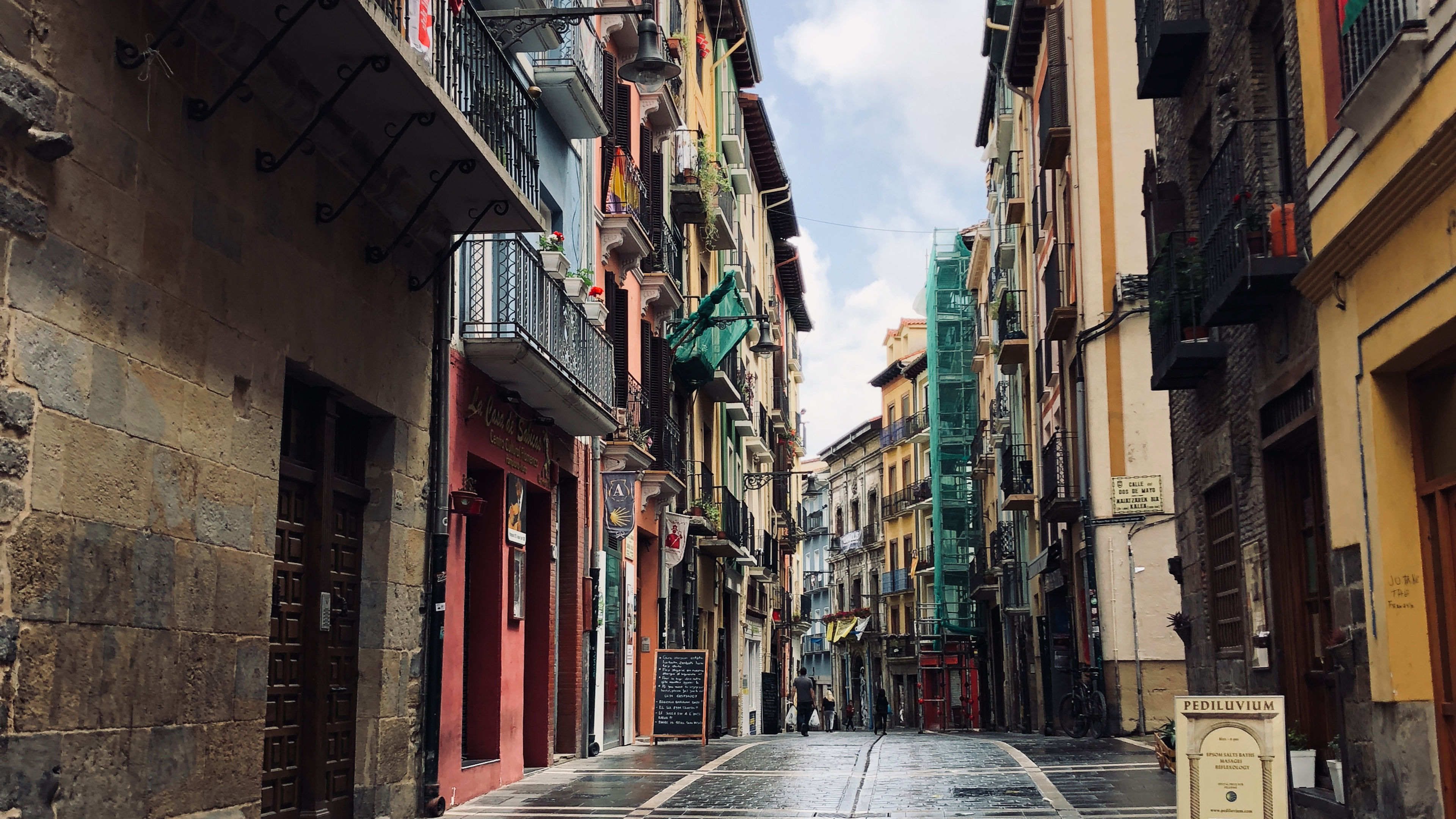
12.56 miDistance
950 ftElevation gain
1,223 ftElevation loss
4 h 0 mTime
A misty rain, and gray clouds, kept pace with us as we grabbed breakfast at the cafe from the previous night, took our final steps over the bridge that had brought us in to town, and headed for the hills.
We briefly hiked passed industrial sites that invaded the green world around us.
Fog, mist, and heavy gray clouds hugged the hills in the distance as we traded paved roads for gravel ones. Each stolen glance behind showed a town of white and red houses shrinking into the distance, become a multi-colored dot on the side of a hill.
Nature quickly surrounded us as we left the gravel road, and took the narrow stone-paved path higher towards the light falling rain. Shortly soon-after we were made aware that we were in the Basque Country. Poppies lined the trail as we walked past barbed wire fences with donkeys staring in wonder at us, and a few of them posed for pictures.
The large and fast moving Arga River was on our right as the sun came out. We approached our first stop at a cafe on the outskirts of Zuriáin, along the rivers edge.
Over the next hour we walked along highways, passed abandoned buildings, and through tall grasses. Here we came to a fork in the path: off to the left led to Pamplona, and to the right was a small detour which led to Zabaldica at the top of a hill. I chose the detour, while the others chose the main route.
The small hamlet at the top on this detour contained a 12-century church: Iglesia de San Esteban, which has one of the oldest church bells in Spain. I lit a candle, grabbed some photos from the bell tower, and continued on.
While hiking down the dusty path from the church I happened upon a small snack stand sitting in the shade of an old farmhouse. I grabbed an apple and left a small donation.
There were no other pilgrims walking ahead of, or behind, me as I headed over random hillside paths, through dark tunnels under highways, and down sloping tree-lined roads towards a bridge that led to Trinidad de Arre.
I quickened my pace after realizing that I had not seen my new Camino friends, and hoping that I would find them up ahead of me. After walking through the empty city streets I spotted them resting at a cafe in a small town square.
The final route to Pamplona took us through some of the busiest, and shadiest, parts of the city. I can't imagine what it must be like to live here and to see so many pilgrims backpacking along your streets.
Empty urban streets gave way to a small park which led to the Magdalena Bridge, and the walled city. Ahead of me stood some of the most massive stone walls that I have ever seen. It took us 10 minutes to make our way around the base of these walls and arrive at the drawbridge entrance.
After crossing the drawbridge we turned the corner and were met with some of the most colorful buildings. Every single building was a different color alternating between pink, blue, green, or yellow. There were town fountains everywhere, and the young people hung out in the streets drinking.
We dropped our stuff off at a nice Albergue because the previous night at Zubiri was too much of a shock, and it was the first one we came across. There was a bar down the street called Meson de la Navarreria, and we saddled up there for food and drinks.
I left the bar to check out the church, and ran into Tania from Roncesvalles taking a tour of the city with one of her Camino friends: Alex (USA). We headed to the ramparts which look out over the new construction beyond the walls. The church was empty and dark; not ready for tourists just yet, but eventually I would return later on and check it out. The main square was full of activity with people dining and kids running about.
The hills, while beautiful, were starting to get to me with all of the descending and I was ready for some flat ground. The day after tomorrow promised that: we would be leaving for the monument to the pilgrims at Alto de Perdon, and the city of Puente la Reina.

